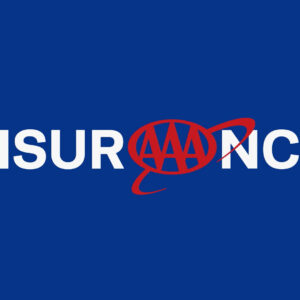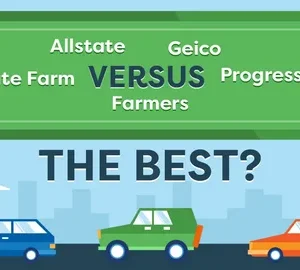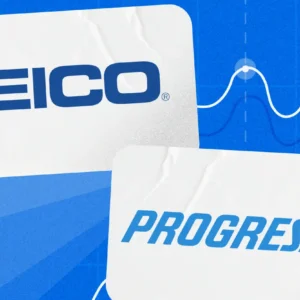Choosing the right health insurance plan isn’t just about ticking a box during open enrollment—it can mean the difference between saving hundreds (or even thousands) of dollars in premiums and out-of-pocket costs each year. In 2025, the three most common managed-care plan types—PPO, HMO, and EPO—each offer a unique blend of cost, flexibility, and network access. This in-depth guide will walk you through everything you need to know, from how each plan works to side-by-side cost comparisons and actionable tips for maximizing savings.
Understanding PPO Plans
A Preferred Provider Organization (PPO) gives you the broadest choice of doctors, specialists, and hospitals—but typically at a higher price tag. Unlike HMO or EPO plans, PPOs:
- Don’t require referrals to see a specialist.
- Cover out-of-network care, albeit at a higher coinsurance rate.
- Usually have higher premiums and higher deductibles, but lower copays for in-network services.
According to Cigna, a leading insurer, PPO plans “offer a larger network of providers and more freedom to see specialists, without the need for a primary care referral” (Cigna: PPO vs HMO vs EPO).
Why choose a PPO?
- You travel frequently or split time between cities.
- You have an ongoing relationship with an out-of-network specialist.
- You value flexibility over monthly cost.
Understanding HMO Plans
A Health Maintenance Organization (HMO) keeps costs low by steering you to a select network and emphasizing preventive care. Key features include:
- Primary Care Provider (PCP) requirement—you choose one doctor to coordinate all care.
- Referrals are needed for specialist visits.
- No coverage for non-emergency out-of-network care.
HMOs tend to have the lowest premiums and lowest deductibles, making them an attractive option for budget-conscious individuals and families.
“In 2025, nearly half of all Marketplace plans are HMOs, reflecting their popularity among enrollees seeking affordability”
(HealthInsurance.org: Plan Market Share).
Why choose an HMO?
- You prefer predictable costs and a single point of contact for all care.
- You rarely need to see specialists outside your network.
- You want robust preventive coverage with minimal paperwork.
Understanding EPO Plans
An Exclusive Provider Organization (EPO) is a hybrid between PPO and HMO, blending moderate flexibility with cost savings. EPO plans generally:
- Don’t require referrals for specialists (like PPOs).
- Exclude out-of-network coverage, except in emergencies (like HMOs).
- Fall between PPOs and HMOs on both premiums and deductibles.
Per Anthem:
“EPO plans offer more flexibility than HMOs—no referrals—but at lower premiums than PPOs”
(Anthem: EPO Overview).
Why choose an EPO?
- You want the simplicity of no referrals.
- You’re comfortable staying within a network.
- You seek a balance between cost and choice.
PPO vs HMO vs EPO: Key Differences
| Feature | PPO | HMO | EPO |
|---|---|---|---|
| Network Size | Largest (in- and out-of-network) | Limited to in-network | Moderate (in-network only) |
| Referrals | Not required | Required for specialists | Not required |
| Out-of-Network Coverage | Covered (higher cost-sharing) | Not covered (except emergencies) | Not covered (except emergencies) |
| Typical Monthly Premium | Highest | Lowest | Mid-range |
| Typical Deductible | Higher | Lower | Moderate |
| Flexibility | High | Low | Moderate |
How Much Will You Pay in 2025?
Let’s look at real-world numbers. On the Affordable Care Act Marketplace, the average monthly premium for unsubsidized plans in 2025 is $590 (Forbes: 2025 Average Premium). But premiums vary widely by plan type:
| Plan Type | Average Monthly Premium |
|---|---|
| HMO | $550 |
| EPO | $600 |
| PPO | $670 |
Source: Internal analysis of 2025 Qualified Health Plan Landscape, aligned with Investopedia data.
If you’re 30 years old, Investopedia reports average monthly premiums of $506 for HMO, $548 for EPO, and $618 for PPO (Investopedia: Age-Based Premiums). Over a 12-month period, those differences can add up:
- HMO: $506 × 12 = $6,072
- EPO: $548 × 12 = $6,576
- PPO: $618 × 12 = $7,416
That’s a potential $1,344 difference between the cheapest (HMO) and most expensive (PPO) plans for a 30-year-old.
Implications & Insights: What It All Means for Your Wallet
- Network Matters
- If you live in a rural area or travel frequently, a PPO’s broader network can avoid surprise out-of-network bills.
- If most of your care is nearby, an HMO or EPO network likely covers your preferred providers at a fraction of the cost.
- Specialist Care
- Chronic conditions—like diabetes or heart disease—often require specialists. A PPO means no referral hassles, but if you’re healthy, an HMO or EPO might be perfectly sufficient.
- Premium vs. Out-of-Pocket Trade-Off
- HMOs: Low premiums, but higher barriers if you need out-of-network care.
- PPOs: High premiums, but predictable access to any provider.
- EPOs: The “sweet spot” for many—no referral red tape, moderate premiums, but network-only care.
- Employer-Sponsored vs. Marketplace Plans
- Employer-sponsored EPOs can cost 9% less per employee than PPOs (Paycor: Employer Cost Comparison).
- Marketplace plans skew heavily toward HMOs (47%) and EPOs (30%), with PPOs making up just 15% of offerings (HealthInsurance.org: Plan Market Share).
Choosing the Right Plan: A Step-by-Step Checklist
- Assess Your Healthcare Needs
- Frequency of doctor visits, existing conditions, planned procedures.
- Map Your Providers
- List your preferred PCP, specialists, hospitals—check which network they belong to.
- Compare Premiums & Out-of-Pocket Costs
- Balance low monthly premiums against potential high deductibles and coinsurance.
- Understand Referral Rules
- Are you okay managing referrals, or do you need direct specialist access?
- Consider Total Cost for the Year
- Estimate: Premiums + deductible + average copays = Total annual health cost.
- Check Additional Perks
- Wellness programs, telehealth options, drug formularies, preventive care covered at 100%.
- Run the Numbers
- Use online calculators from healthcare.gov or your insurer to model different scenarios.
Insider Tips to Save Even More
- Take Advantage of Preventive Care
All ACA-compliant plans cover annual physicals, immunizations, and some screenings at 100%—use them to catch issues early. - Explore Health Savings Accounts (HSAs)
If you choose a High-Deductible Health Plan (HDHP), you can pair it with an HSA to save pre-tax dollars for qualified medical expenses. - Look for Telehealth Riders
Telemedicine visits often cost $0–$25 under many plans—ideal for minor concerns. - Time Your Expenses
If you anticipate big procedures, consider if paying more in premiums to hit your deductible sooner saves you money in the long run. - Annual Plan Review
Networks and premiums shift year to year. Don’t auto-renew without checking if your doctors are still in-network or if a better deal exists.
Conclusion
In 2025, the alphabet soup of health insurance plans—PPO, HMO, and EPO—boils down to one core question: What do you value most, cost savings or flexibility?
- Choose an HMO if you want the lowest premiums and don’t mind network-only care with referrals.
- Opt for a PPO if you need broad provider access and are willing to pay extra for the freedom to see anyone, anytime.
- Go with an EPO if you prefer no-referral specialist visits within a network at a moderate price point.
Armed with this guide, real cost comparisons, and a clear step-by-step checklist, you’re ready to navigate open enrollment with confidence—and potentially save thousands in premiums over the year.
Remember: Health insurance is not a “set it and forget it” decision. Networks change, premiums fluctuate, and your health needs evolve. Make a habit of reviewing your plan annually, and don’t hesitate to switch if another option delivers better value for your unique situation






